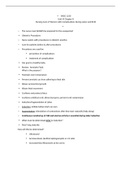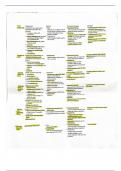Samenvatting
Emotion and Cognition Summary Colleges 1-8
Uitgebreide samenvatting van de Emotion & Cognition lectures. Het tentamen zal in het Engels zijn, daarom is het in het Engels geschreven (soms een vertaling voor de Nederlandse studenten).
[Meer zien]














